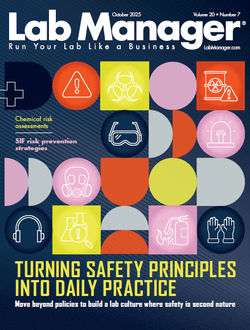
Danny checks his email and finds a message advising him that he is the new team leader for the Alpha project. The email goes on to say that "during your time at this company, we believe you have shown the skills needed for success as a leader." He immediately hits panic mode because his dream has come true—but he's not quite sure he is ready to lead.
He has always been successful in completing the tasks assigned and he knows his business like the back of his hand, but he does not know where to begin as the top dog. The process of leading a team is about communication and organization.
Related Article: Ensure That You’re Understood When You Speak
Initially, you must determine the course of action based on all that you know about your industry and the project that has been assigned to you. Then, begin by outlining a plan to complete the task with success. When you have completed your outline for the plan of attack—and you can present it with confidence—you are ready to face the team. It is confidence and preparedness that allows them to buy in to you as the team leader.
Once you have amassed and organized the knowledge you possess in your industry, leadership is about finding the glue that binds your team together.
Let’s look at the GLUE.
Gather Team Information
Listen to the Team
Unify the Team
Empower and Execute
Gather information about the team members and their backgrounds and skill sets. Sometimes that information is available within the organization. Other times you are fortunate enough to know your team members. No matter how you acquire the information, learn what you can about what the players have done on other teams or within the company at large. This background information is essential as a basis upon which you will build the infrastructure of your team. Now keep in mind: People change. Therefore, this collected information will be subject to modification and change as you watch the team come together during the life of the project. The initial information should be reviewed and analyzed as much as you analyze the project itself.
If the information you are gathering is subjective: consider the source. Depending on who provided the information, it may or may not be accurate. Ultimately, it is in the next phase—as you listen to your team members and learn—that you will begin to determine the strengths and weaknesses of your team in reality.
Listen to their concerns and knowledge to determine their ability to understand and comprehend. As you do so, the several types of players will surface. Listen closely to the comments and thoughts of your team. The way they speak and address the situation at hand will give you great insight into the type of team member they will become.
As each team member speaks or reacts to your plan, you must balance their words and actions against the information that you have gathered about their backgrounds and with the plan that you wish to implement. Team members will all individually bring positive skillsets to the table. Pay attention to those who will be constructive team members and aggressive participants as well as those with initiative who will lead their portion of the project with excitement. You may find that one person is an expert in the subject matter at hand while another is an expert in organization.
Advanced Lab Management Certificate
The Advanced Lab Management certificate is more than training—it’s a professional advantage.
Gain critical skills and IACET-approved CEUs that make a measurable difference.
As you determine the place in your machine for each of the players, you will want to make sure that you speak to the expertise of the individuals so that they feel that you are speaking directly to them. For instance, when you were speaking of technical elements, you will want to look directly to your technician. On the other hand, while you are mapping out the course of action, you may want to begin with and acknowledge that you recognize a specific individual’s organizational skills, and indicate that you trust them with keeping the task on course. If someone is questioning every action you take, give that person value by letting them know that they are beneficially keeping you on your toes. This will give that person value as your conscience.
Unify them by finding a common thread, or by creating one that they can commit to. Once you have identified the type of team members you are managing, you will want to present the project and the individual tasks in a format that speaks to the specific skillsets of the individual members.
Create unity by making it clear that they are all essential and necessary members of your team. Help them understand that they are working for the common good of the team and the organization, and let them know that their relationship to each other is vital for success. If they can understand how they fit into the big picture—and how the project fits into the big picture of the organization—they will be more likely to feel like a part of the solution.
Empower the team to execute the plan with dedication and passion. Make the path ahead clear. Allow them to understand the stages of development as your project progresses. Give them feedback as you move along the way, and be ready and willing to step in and assist with mediation if conflict or hostility begins. By allowing the team to clearly visualize the direction upon which they are embarking, execution will become more fluid and guaranteed. Always keep an open line of communication with all team members in a transparent and open fashion so that you will minimize the risk of competition for control.
With his plan outlined, and with a firm grasp on who his team members will be, Danny can walk into the conference room with all the information he could gather. He can now pay attention to the team members and listen carefully so that he can unify and empower them. He has the GLUE to bind his team. He must now put the plan in motion as he fosters the all for one and one for all mindset.
About the Author
Joe Curcillo, The Mindshark, is a speaker, entertainer, lawyer, and communications expert. As an adjunct professor at Widener University School of Law, Mr. Curcillo developed a hands-on course, based on the use of storytelling as a persuasive weapon. He has been a professional entertainer helping corporations and associations improve their communication techniques since 1979. For more information on bringing Joe Curcillo in for your next event, please visit www.TheMindShark.com.












